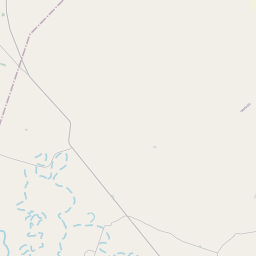Site of Quinan Community
Historical marker location:






The village of Quinan was established about 1872 on the Wharton-Richmond road. It was named for Judge George E. Quinan (1819-1893), who lived south of here on Peach Creek. A native of Ireland, Quinan served in the Texas Senate and on the state Court of Civil Appeals. He was one of the founders of the State Bar of Texas. The community named for him had a school, Methodist church, and a post office located in John C. Habermacher's store. The Quinan community declined after the founding of Hungerford in 1882. The post office and businesses were relocated here later
As one of the most visible programs of the Texas Historical Commission (THC), historical markers commemorate diverse topics in Texas history, including: the history and architecture of houses, commercial and public buildings, religious congregations, and military sites; events that changed the course of local and state history; and individuals who have made lasting contributions to the state, community organizations, and businesses.
Texas was once a part of Mexico but gained independence in 1836 after a famous battle at the Alamo.
In 1846, the Texas legislature established Wharton County, named after brothers William Harris Wharton and John Austin Wharton, who were prominent figures in the Texas Revolution. The county was officially organized in 1848, with the town of Wharton selected as the county seat. The growth of the county was fueled by the development of the railroads, which provided transportation for agricultural products such as cotton, corn, and cattle.
During the Civil War, Wharton County was heavily affected by the conflict. Many of the county's residents supported the Confederacy, with several military units being raised in the area. However, the county also had a significant number of Union sympathizers, leading to tensions and conflicts within the community. After the war, the county gradually recovered and experienced economic growth, with new industries such as oil and gas exploration contributing to its prosperity.
Today, Wharton County is a diverse community with a strong agricultural base. The county is known for its rice and cattle production, as well as its oil and gas industries. It is also home to several historical sites, including the Wharton County Courthouse, which was built in 1889 and is listed on the National Register of Historic Places. With its rich history and thriving economy, Wharton County continues to be an important part of Texas's cultural and economic landscape.
Wharton County Timeline
This timeline provides a glimpse into the major events and milestones that have shaped the history of Wharton County, Texas.
- 1846: Wharton County is established by the Texas legislature
- 1848: The first settlements are established in the county
- 1849: The town of Wharton is founded and becomes the county seat
- 1850: The population of the county is 1,075
- 1861-1865: Wharton County residents participate in the American Civil War
- 1881: The Gulf, Colorado and Santa Fe Railway reaches Wharton County
- 1900: The Galveston hurricane devastates the county, causing widespread destruction
- 1930: The county's population reaches its peak at 39,195
- 1965: The construction of the Wharton County Junior College is completed
- 1985: The county courthouse is added to the National Register of Historic Places